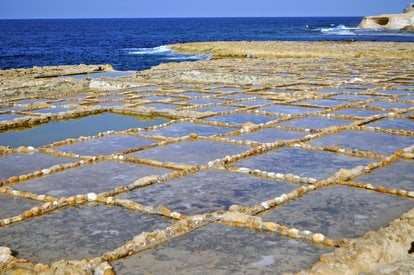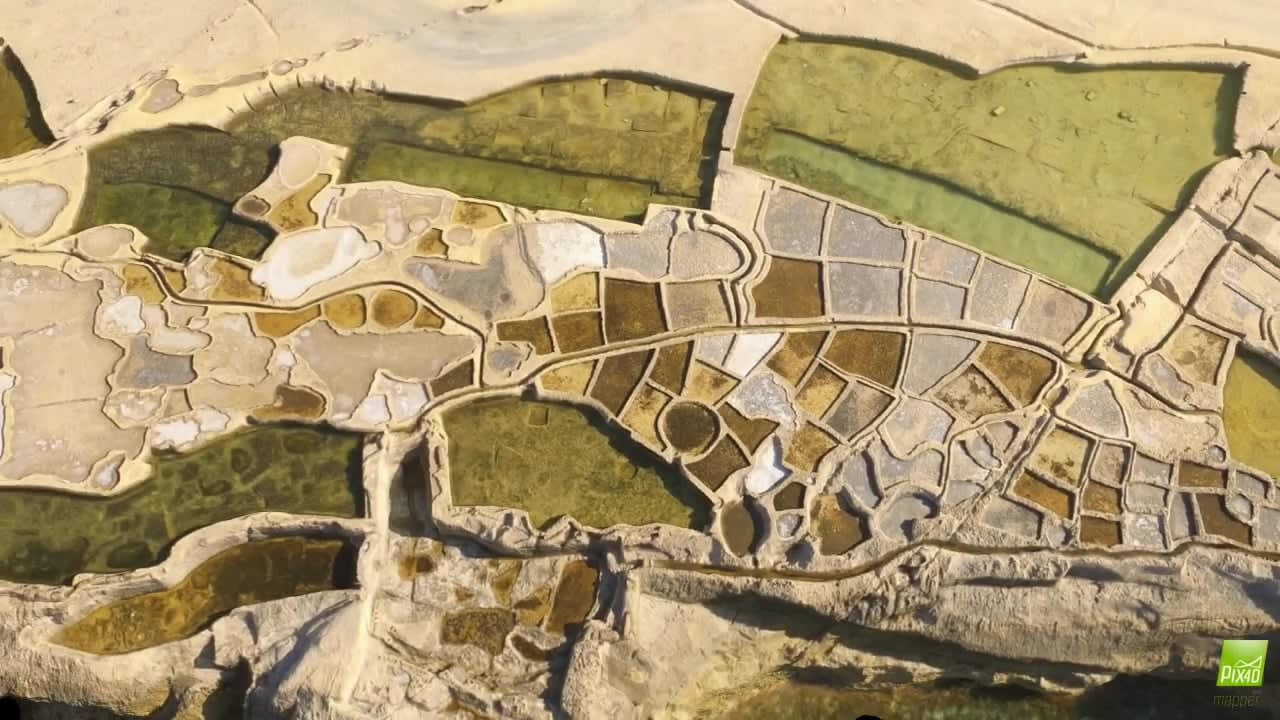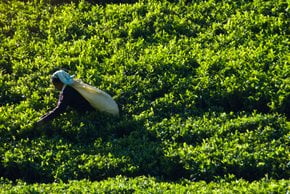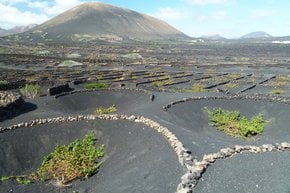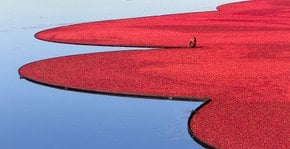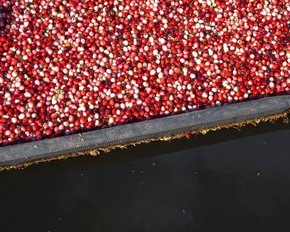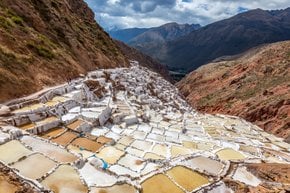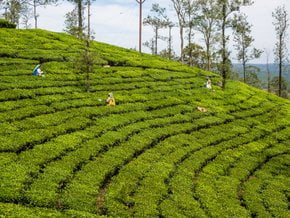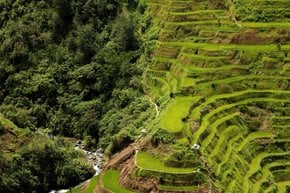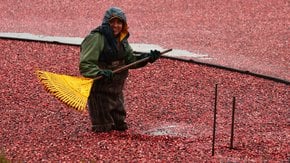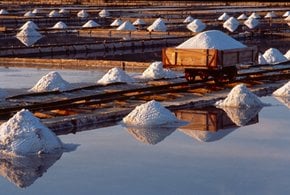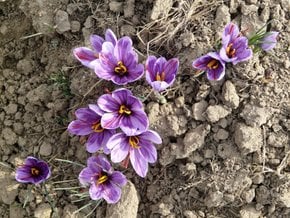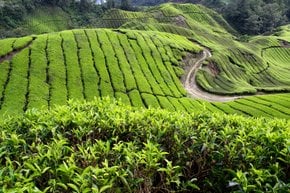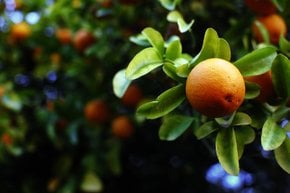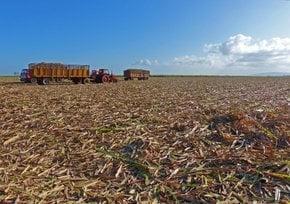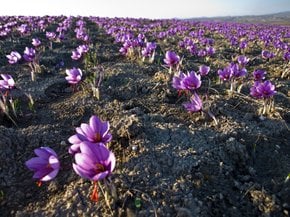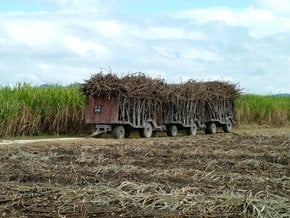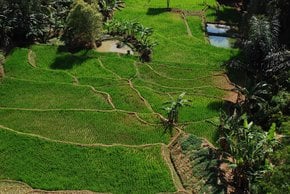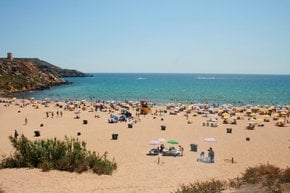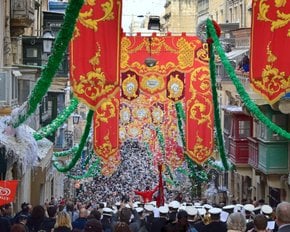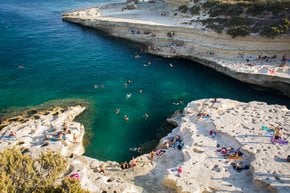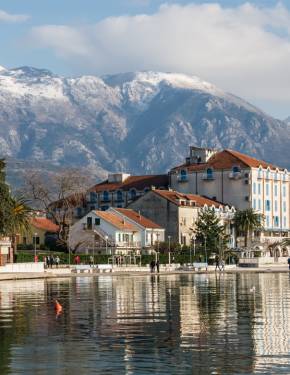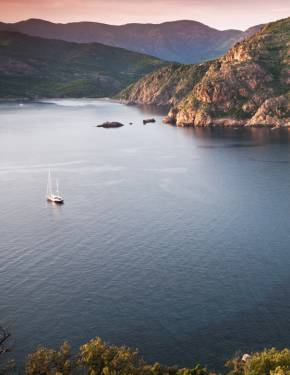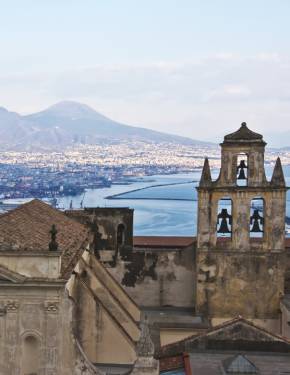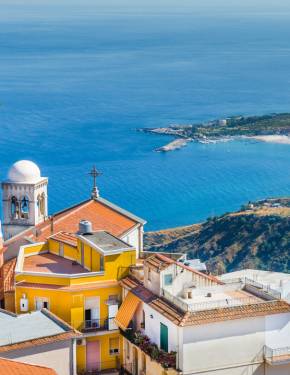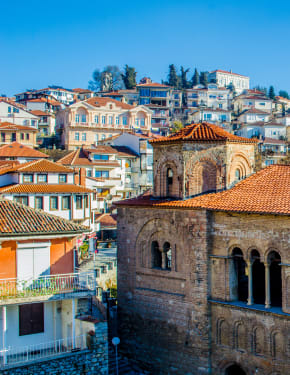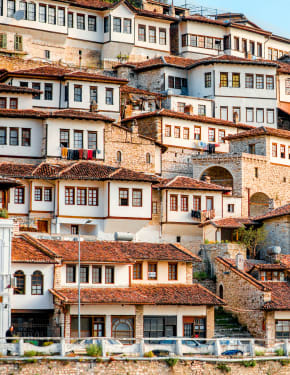Sea Salt Harvesting in Malta 2026
Sea salt is still prized for its flavour and texture, which is considered by some serious food lovers to be superior to the more common mined table salt
Best time: May–September
There are very few working salt pans left in Malta but it’s part of the national heritage and historically important. The harvesting of salt in Malta has continued for centuries. It dates back to the Roman times and became popular during the time of the Knights of St. John. Its large scale production started in the 19th century, especially in Salina Bay.
The production of sea salt has been passed down through the same families, who have kept the tradition for many generations. Members of these families work through hot summer days scraping up the salt crystals to be stored and processed in the caves that have been carved into the coastal rock in the cliffs behind them.
The salt pans along the coastline are filled with sea water to be evaporated by the hot sun leaving behind the crystalline salt to be collected and eventually sold. The weather controls salt production, for example, the northerly winds dry up the water faster. There are around 40 salt pans remaining around Malta. Il-Blata tal-Melħ is one of the more famous ones, literally translated as ‘Salt Rock.’ There are a few salt pans used for harvesting sea salt as part of the century-old Malta tradition—in Marsascala in the south and Xwejni and Wied il-Għasri in Gozo. The season of salt production is open from May to September, depending on the weather. Salt pans can be visited and a demonstration is given to tourists.

